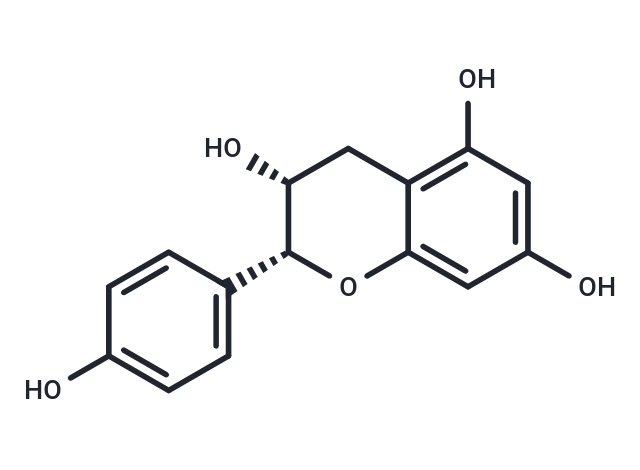Shopping Cart
- Remove All
 Your shopping cart is currently empty
Your shopping cart is currently empty

(-)-Epiafzelechin is a COX inhibitor with antioxidant and anti-inflammatory activity, osteoprotective effects in a mature ovariectomized mouse model, ability to stimulate osteoblast activity and inhibit osteoclast activity.

| Pack Size | Price | Availability | Quantity |
|---|---|---|---|
| 1 mg | $187 | In Stock | |
| 5 mg | $396 | In Stock | |
| 10 mg | $579 | In Stock | |
| 25 mg | $912 | In Stock |
| Description | (-)-Epiafzelechin is a COX inhibitor with antioxidant and anti-inflammatory activity, osteoprotective effects in a mature ovariectomized mouse model, ability to stimulate osteoblast activity and inhibit osteoclast activity. |
| In vitro | (-)-Epiafzelechin exhibits significant antioxidant activity with an EC50 of 20.9μM[1]. |
| Molecular Weight | 274.27 |
| Formula | C15H14O5 |
| Cas No. | 24808-04-6 |
| Smiles | O[C@@H]1Cc2c(O)cc(O)cc2O[C@@H]1c1ccc(O)cc1 |
| Relative Density. | 1.492g/cm3 |
| Storage | keep away from direct sunlight | Powder: -20°C for 3 years | In solvent: -80°C for 1 year | Shipping with blue ice. | |||||||||||||||||||||||||||||||||||
| Solubility Information | DMSO: 30 mg/mL (109.38 mM), Sonication is recommended. | |||||||||||||||||||||||||||||||||||
Solution Preparation Table | ||||||||||||||||||||||||||||||||||||
DMSO
| ||||||||||||||||||||||||||||||||||||

Copyright © 2015-2025 TargetMol Chemicals Inc. All Rights Reserved.